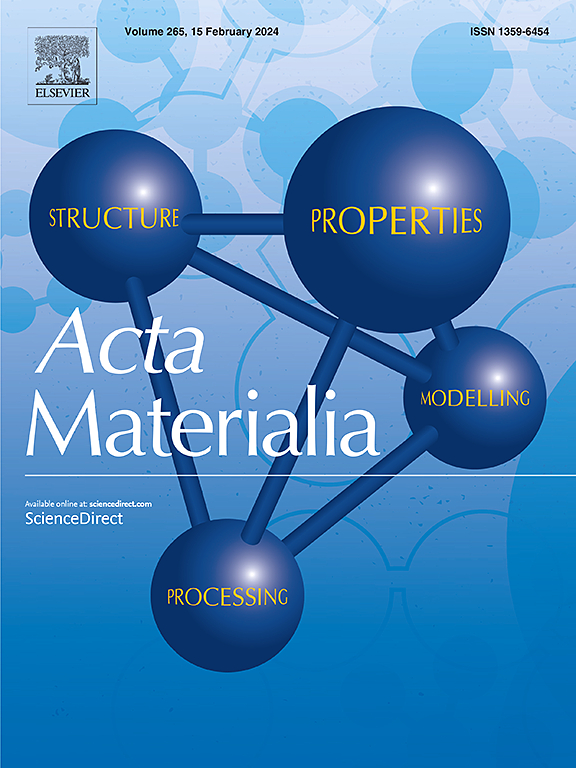通过控制析出相的演化改善IN718/316LN瞬态液相结合接头的蠕变性能
IF 9.3
1区 材料科学
Q1 MATERIALS SCIENCE, MULTIDISCIPLINARY
引用次数: 0
摘要
为了改善IN718/BNi-2/316LN瞬态液相(TLP)结合接头的蠕变性能,设计了长时间的键合后均质处理(phbht)。与传统phbht相比,在650°C和150 MPa下,蠕变寿命提高了10倍以上。显微组织分析和密度泛函理论(DFT)表明,长期phbht通过控制析出相的演化来抑制空腔的形核和生长,有效地延缓蠕变破裂和降低应变速率。Nb、Mo和Si在晶界处的偏析,加上Nb3Si的成核能垒降低,有利于其成核。Nb3Si相可以改变蠕变空腔形状因子,增加空腔成核能垒,降低空腔成核速率,从而延缓空腔的形成。此外,Nb3Si/Ni界面的高空位形成能和界面粘附功进一步阻碍了空腔的成核。提出了基于析出相与空腔协同演化的蠕变空腔演化动力学模型。该模型能够定量描述蠕变空洞的生长和聚并过程,并基于晶间析出相的动态演化准确预测蠕变破裂时间。这些发现为改善接头和非均质材料的蠕变性能提供了见解,其中蠕变空洞在析出物周围成核。本文章由计算机程序翻译,如有差异,请以英文原文为准。

Improving Creep Properties of IN718/316LN Transient Liquid Phase Bonding Joints by Controlling Evolution of Precipitate Phases
A long-term post-bonded homogenization treatment (PBHT) was designed to improve the creep properties of IN718/BNi-2/316LN transient liquid phase (TLP) bonding joints. Compared to conventional PBHT, creep life improved more than tenfold at 650°C and 150 MPa. Long-term PBHT inhibits cavities nucleation and growth by controlling precipitate evolution, effectively delaying creep rupture and reducing strain rate, as revealed by microstructural analysis and density functional theory (DFT). The segregation of Nb, Mo, and Si at the grain boundary, combined with the reduced nucleation energy barrier of Nb3Si, facilitates its nucleation. Nb3Si phase can modify the creep cavities shape factor, increase the cavities nucleation energy barrier, and reduce the cavities nucleation rate, thus delaying cavities formation. Additionally, high vacancy formation energy and interfacial adhesion work at the Nb3Si/Ni interface further hinder the cavities nucleation. A kinetics model for creep cavities evolution is proposed based on the coordinative evolution between precipitates and cavities. This model can quantitatively describe the growth and coalescence of creep cavities and predict the creep rupture time accurately based on the dynamic evolution of intergranular precipitate phases. These findings provide insights into improving the creep properties of joints and heterogeneous materials, where creep cavities nucleate around precipitates.
求助全文
通过发布文献求助,成功后即可免费获取论文全文。
去求助
来源期刊

Acta Materialia
工程技术-材料科学:综合
CiteScore
16.10
自引率
8.50%
发文量
801
审稿时长
53 days
期刊介绍:
Acta Materialia serves as a platform for publishing full-length, original papers and commissioned overviews that contribute to a profound understanding of the correlation between the processing, structure, and properties of inorganic materials. The journal seeks papers with high impact potential or those that significantly propel the field forward. The scope includes the atomic and molecular arrangements, chemical and electronic structures, and microstructure of materials, focusing on their mechanical or functional behavior across all length scales, including nanostructures.
 求助内容:
求助内容: 应助结果提醒方式:
应助结果提醒方式:


